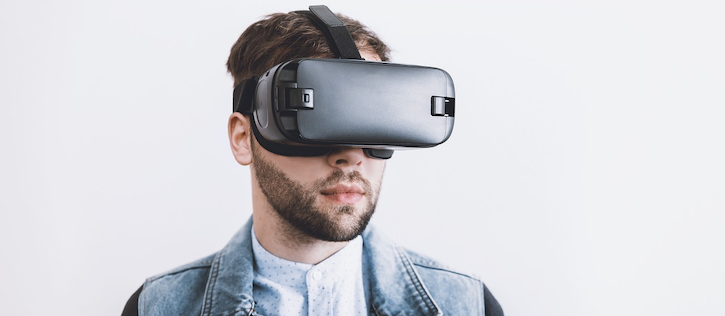After Promising Clinical Results, Healthcare Has Emerged as an Early Booster of VR
The technology can improve outcomes and create better treatments and diagnostics.

Augmented reality (AR) and virtual reality (VR) tools have the potential to enhance treatment and diagnostics and improve outcomes. These technologies, though still in their infancy in healthcare, have shown positive results in clinical trials, including one conducted by Cedars-Sinai Medical Center.
The randomized controlled study demonstrated the use of an immersive VR intervention for non-opioid pain management. The patients who used a 3D VR intervention versus a two-dimensional pain-distraction video achieved a larger pain reduction, hinting at what could be an important future for the technology.
What’s more, a recent study found that a VR tool identified early Alzheimer’s disease more accurately than existing cognitive tests. And in another study published in JAMA Network, AR digital therapy solutions were effective in improving the social behavior of children with autism spectrum disorder.
But promise is one thing, and implementation is another. With that in mind, several recent reports have highlighted the potential of AR and VR to take hold in healthcare and other industries. Today, for instance, Hampleton Partners released an analysis of the AR and VR mergers and acquisition market, revealing that early adopters of VR and AR are helping the technologies become more mainstream and proving their worth.
Notably, the report singled out healthcare as an early booster of the technologies.
A Growing Healthcare Market
The AR and VR market in healthcare is expected to grow with a double-digit compound annual growth rate of 23.13% during 2019 to 2025, according to a Research and Markets report.
The healthcare sector is adopting technologies for better treatments and diagnostics. According to the report, the increasing expenditure on technologies and the immediate need for effective solutions drives the AR market in healthcare.
AR and VR are growing specifically for surgical planning, treatment and navigation, comprising an estimated 42.4% of the overall use of the technology in the healthcare market. The technologies allow for better visualization of the human body and an improved augmented view of anatomical structures in real time.
The technology also helps radiologists improve interventional treatments using real-time 3D images from inside a patient’s blood vessels.
Moving Into the VR Market
Last year, two notable healthcare transactions happened, suggesting that more mainstream healthcare and tech companies are bracing for a bright future in VR.
Varian, a developer of cancer care solutions, acquired humediQ, the manufacturer of an automated patient identification, positions and motion management system for radiation therapy.
StayWell, a health empowerment company, acquired Provata Health, a digital health company that delivers population health programs to employers, health plans and hospital systems. The solution combines VR-enabled guided meditations with physiological monitoring to track outcomes.
Exploring the Benefits of VR and AR
AR and VR tools have aided researchers and clinicians as they have learned more about the benefits of the technology.
Eran Orr, CEO of XRHealth, told Inside Digital Health™ at HIMSS, that he sees VR as the next telehealth platform of the healthcare market.
That’s because the tech is fully-immersive, allowing patients to escape high-pressure situations. VR allows the patient’s mind-body connection to be manipulated and manifest in symptom improvement. The tool can also help patients forget about their pain and focus on rehabilitation.
VR environments can be manipulated quickly so that data collected can paint a clear picture of how the patient copes with changes.
The tech can also lead to decreased costs.
Looking Ahead
Along with surgical planning and navigation, VR and AR can aid clinicians in many ways.
The technology can be used as a tool for physical and cognitive rehabilitation. VR and AR can also be used to prevent physical and emotional illness.
Clinicians can even use the technology as a training tool to learn rare, lifesaving interventions.
But healthcare is likely still a long way from widespread acceptance and implementation of VR. It’s one thing to nod in agreement with optimistic market forecasts — it’s another to see the effects of better outcomes and efficiencies.
Get the best insights in digital health directly to your inbox.
Related
VR is Helping Solve Schizophrenic Auditory Hallucinations
Beyeonics Raises $11.5M to Develop AR and VR for Eye Surgeons
Podcast: Adoption of Healthcare Tech in the Age of COVID-19 with Dr Kaveh Safavi
June 22nd 2021Kaveh Safavi, MD, JD, global health lead of Accenture Health, discusses how the pandemic influenced the speed at which healthcare organizations adopted new technologies and how this adoption is impacting patient care.